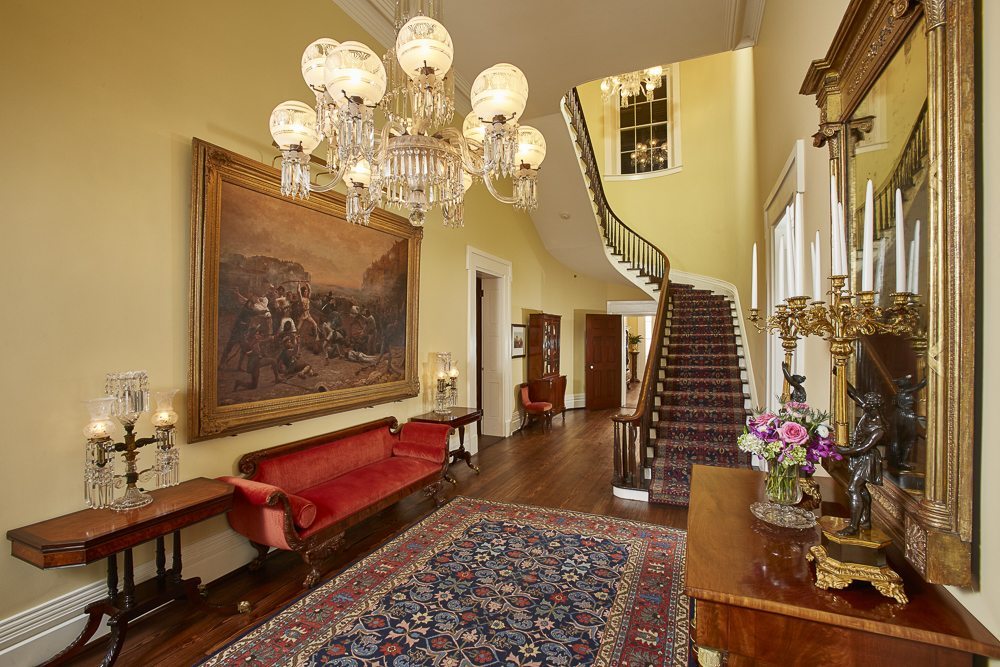
The Entry Hall has remained the central area of the Governor’s Mansion from 1856 to the present. The house originally provided for seating in a well-ventilated center hallway, both upstairs and down. When the front and back doors of the original house were opened, the east-west breezes would cool the house on hot Texas days. The window at the top of the stairway originally looked out to the garden and stables located in the rustic yard.
The Entry Hall has changed very little over the years. The 1914 addition of an attached kitchen and conservatory below closed off the breezes from the back of the Entry and made the room a more interior space. The curve on the back of the Entry Hall was included when the first central air and heat was added so that the ductwork could be concealed. The bannister is original and contains filled nail holes, a result of tacks driven into the bannister by Governor Hogg to prevent his children from sliding down the rail.
In the late 1800’s, an upright piano stood at the rear of the hall and was played for formal entertaining. During World War I, a United States flag was draped on the wall as you ascend the stairway. Many famous individuals as well as thousands of Texans have walked through the front door as guests of the Texas Governor.
Source:
- Jean Daniel, Price Daniel and Dorothy Blodgett. The Texas Governor’s Mansion.
Austin: Texas State Library and Archives Commission and the Sam Houston Regional Library and Research Center, 1984.
- The Governor’s Mansion of Texas: A Tour of Texas’s Most Historic Home.
Austin: Friends of the Governor’s Mansion, 1997.
